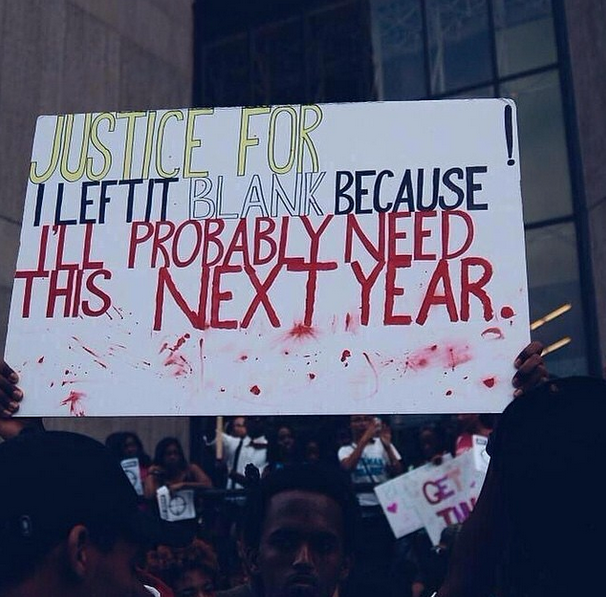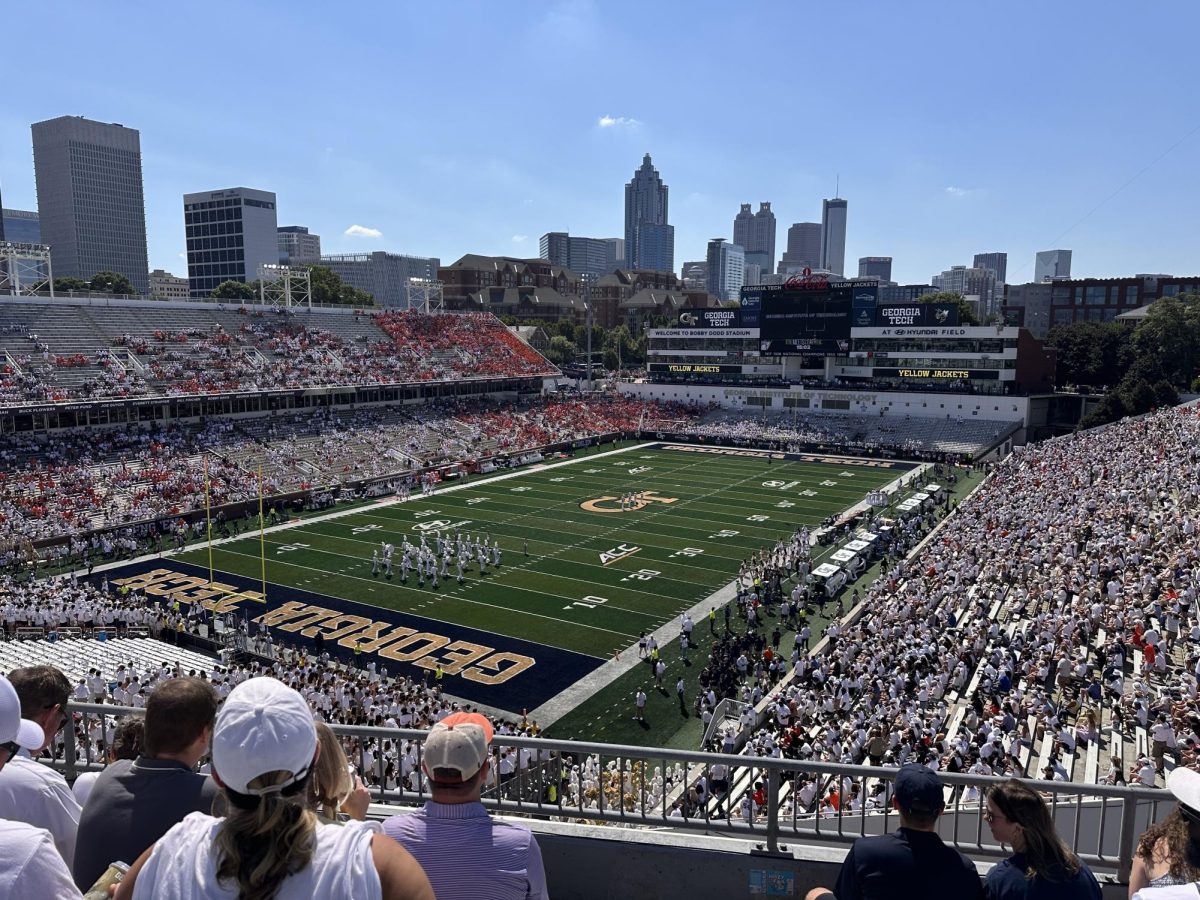*This article was featured in the April print edition of The Blue and Gold.
The year 2015 seems to be filled with stories of murders committed by policemen. The most recent outcry has been about the murder of Walter Scott, an unarmed black man who was shot eight times by a North Charleston police officer who was within close range when Scott began to run away.
Social media networks such as Twitter and Instagram have become platforms to raise awareness of cases such as that of Scott. One particular member of the Chamblee class of 2013, Semere Araya, has been vocal on his social networks and in his day-to-day life.
“I attended two protests in August, a vigil and a march,” Araya said.
At the protests he attended, Araya held a large white sign that said, “Justice for _______. I left it blank because I’ll probably need this next year.”
“I actually made sixteen lines, but I couldn’t decide which to choose. I put it to a vote on my Instagram and that line won. It’s funny because the line that won wasn’t my favorite,” Araya said.
What struck Araya the most about the protests was how diverse the attendees were and the reason that united them together. However, there was a bit of disagreement as to what all the protesters should have done.
When it comes to police officers, Araya says he has always had good experiences.
“I have been reminded that I am nothing more than a black man to some [police officers]. I am overly cautious; I will turn my phone recorder on, stick my hands out the window, and hope for the best,” Araya said. “I try not to dwell on it, but I know my brother and I are just one officer away from being a hashtag.”
Araya’s protest sign received a lot of attention on social media. A photo of him holding the sign was posted by Rihanna a little while after a protest for Michael Brown.
“I didn’t even follow her before she posted my sign. My phone was blowing up with people tagging me and I went to see what was going on. Then I saw my sign with about 70,000 likes at the time. I threw my phone away and it really hit me. I helped propel a movement,” Araya said.
The best part about this for Araya is seeing others use his sign as well.
“When my friends and I were having dinner, they were showing me that my sign was blowing up on Twitter and Tumblr. It didn’t set in until I got on MARTA and someone I never met told me they saw me on their Twitter feed. That blew my mind,” Araya said. “The coolest thing, though, is seeing people recreate my sign. That was humbling.”
The use of social media in all of this is ultimately a good thing in Araya’s book, though he does believe it has positive and negative effects.
“On the positive end, it’s helped draw global attention to this grave injustice. Palestinians were tweeting advice to Ferguson protesters. That’s real. On the negative end, it’s allowed people to profit off of it without really caring. I also fear that it has desensitized people to murders of black people by officers,” Araya said.
Though Araya is sickened every time he hears about another murder by police officers, he is grateful because he says it is better than not hearing about it.
“[The Tamir Rice murder last year] truly stopped everything for me. I appreciate the fact that videotape evidence seems to be worth something in South Carolina [in the Walter Scott case] and that we’re able to move swiftly. If Officer Slager gets the full extent of the law, it’ll show that the justice system still has the potential to treat everyone equally,” said Araya.







